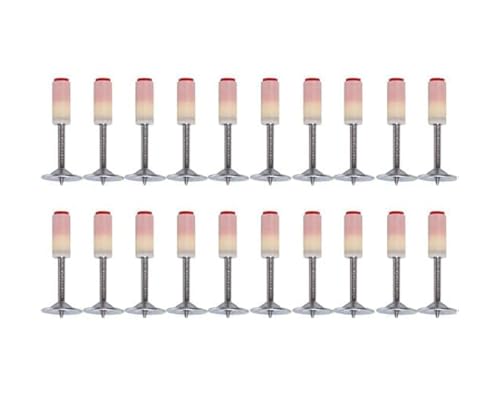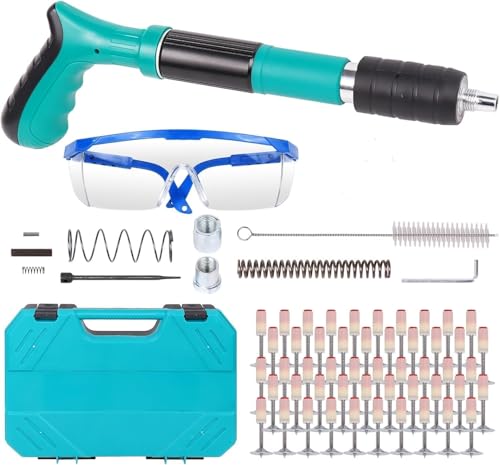Nail Gun Safety : Ensuring Safety When Using a Nail Gun
Top Tips and Best Safety Practices while using Nail Gun.
Certainly! There are several types of nail guns, each designed for specific tasks.
Common Types of Nail Guns:
- Brad Nail Gun: Perfect for installing lightweight trim and cabinet construction. These guns use fine 18-gauge nails and are not suitable for larger molding pieces.
- Finish Nail Gun: Used for securing trim and molding. Finish nail gun handle 15 and 16 gauge nails, providing better holding power than brad nails.
- Framing Nail Gun: Ideal for connecting large lumber pieces in framing, fence installation, or deck building. It Drives nails up to 3.5 inches long and works well with 2*4s or 2*6s.
- Staple Nail Gun: Designed for fasteners, including staples. Commonly used in carpentry and other applications.
- Flooring Nail Gun: Specifically designed for flooring projects, such as installing hardwood or laminate flooring.
- Roofing Nail Gun : Used for roofing jobs, these guns make quick work of attaching singles without causing fatigue like hammer.
- Palm Nail Gun: Great for hard-to-reach places, such as tight corners or overhead work. It is compact and easy to handle.
- Pin Nail Gun: Used for delicate work, like crafts and picture frames.
- Siding Nail Gun : Specifically for siding installation.

Remember to choose the right nail gun based on your project requirements!
Ensuring safety in construction sites is critical, in particular when running with effective equipment like pneumatic nail guns. Regularly following a Nail Gun Safety inspection checklist can prevent accidents and maintain the performance of tool. This checklist is essential for safe and effective operation.
Understanding Nail Gun Safety
It begins with know-how the device you are operating with. Nail guns are available in diverse sorts, which includes pneumatic, electric powered, and fuel-powered. Each type has its personal safety functions and operational hints. Before you start the usage of a nail gun, it is critical to study the manufacturer’s instructions and familiarize yourself with its specific safety mechanisms.
Essential Safety Gear
Wearing the right PPE or Personal Protective Equipment is a fundamental aspect of nail gun safety. Always wear:
- Safety Glasses: Protect your eyes from flying debris.
- Hearing Protection: Nail guns can be loud, so use earplugs or earmuffs to protect your hearing.
- Safety Gloves: These can help you maintain a firm grip on the tool and protect your hands from potential injuries and vibration.
- Safety Helmet and Steel-Toed Safety Shoes: If you are working on a construction site, additional PPE like a safety helmet and steel-toed safety shoes can provide extra protection.
Best Safety Practices
- Regular Maintenance: Ensure your nail gun is well-maintained. Regularly test for any wear and tear, and replace damaged parts straight away.
- Proper Handling: Always deal with the nail gun with care. Point the tool far from your frame and others whilst no longer in use.
- Secure Work Surface: Make sure the floor you are nailing into is stable and secure to save you the nail gun from slipping.
- Trigger Safety: Use the sequential trip trigger mode in case your nail gun has one. This mode calls for the nose of the gun to be pressed against the floor before the trigger may be pulled, reducing the danger of unintentional firing.
- Disconnect Power: Always disconnect the power source before loading nails or performing any maintenance.
Preventing Nail Gun Accidents
Preventing accidents entails extra than just using the proper protection gear and techniques. Here are additional measures to enhance nail gun safety:
- Training: Ensure everyone using the nail gun is properly trained. Understanding how to operate the tool safely is crucial.
- Clear Workspace: Keep your workspace clean and free from obstructions that could cause tripping or distractions.
- Awareness: Stay aware of your surroundings and communicate with others working nearby to avoid accidents.
Nail Gun Safety in Different Scenarios
Nail gun protection can vary depending on the precise use case. Adapting these safety practices to your specific environment is key. For example:
- Construction Sites: Follow site-specific safety protocols and ensure all workers are aware of nail gun safety guidelines.
- Home Projects: If using a nail gun at home, keep children and pets away from the work area to avoid injuries.
Nail gun safety is not something to be taken lightly. By following these tips and best safety practices, you can make sure a safe working environment and prevent potential accidents. Remember, safety should always be your top priority when working with any power tool.
By focusing on it, you not only protect yourself but also those around you. Stay safe and enjoy the efficiency that nail guns bring to your projects without compromising on safety.



Leave a Comment